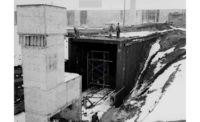The Northwest Power and Conservation Council�s latest energy plan calls for 85% of new energy needs over the next 20 years to be met through efficiency. Area utilities aren�t so sure of its feasibility.
Portland General Electric spokesperson Steven Corson says that the 85% goal can�t be met �cost effectively� and is not realistic with current technologies and Suzanne Hartman of Seattle City Light says that it is �uncertain� if that goal can be met region-wide, although SCL will save enough energy in the next five years to equal the capacity of a new power plant.
The Sixth Northwest Power Plan, an update, done every five years on the 20-year plan, guides the federal Bonneville Power Administration and acts as a reference for the region�s electric utilities. Released on Feb. 10, the plan says that 1,200 average MW can be saved in the first five years, the equivalent of the power use of Seattle, through efficiency. Over 20 years, the plan expects a total savings of 5,900 average MW, reducing greenhouse gas emissions by 17 tons annually.
Demand not met through efficiency should come mainly from wind power, the plan says. New gas-fired turbines are also needed. No new coal-fired plant -- generally producing 2,000 MW per year -- will be welcomed and the plan aims to reduce the use of coal by half.
More than half of the region�s demand for new electricity since 1980 has been met with efficiency, including 4,000 average MW in 2008. Can utilities keep up the pace?
Puget Sound Energy�s Andy Wappler says that efficiency is a key, but with expiring power contracts and aging amenities, new facilities will definitely be needed. As the owner of the nation�s second-largest wind power resource with 430 MW in service, Bellevue, Wash.-based PSE is continuing to �view wind as an increasingly important part of our power portfolio in the future.�
A combination of wind and gas-fired plants are in the plans for PSE, along with considering emerging technologies such as solar, biomass and tidal.
Corson says that renewable resources are something PGE looks to continually add, but they are widely variable and need gas-fired plants to back them up, at least with current technology.
As energy efficiency remains a goal and utilities continue to search for new renewable energy technologies, gas-fired turbines hold ground as the dependable fallback option.




Post a comment to this article
Report Abusive Comment